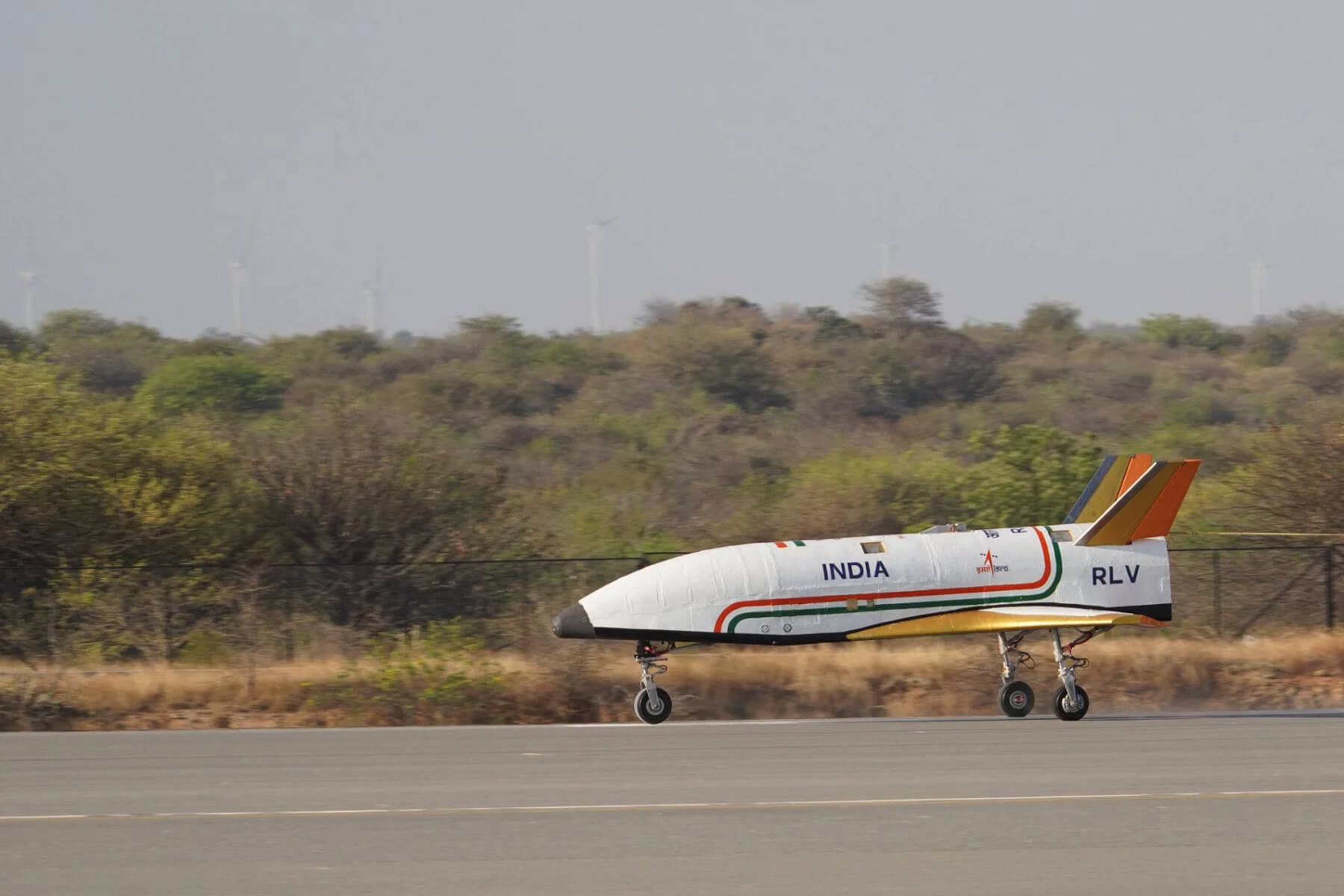On Sunday, the Indian Space Research Organisation (ISRO) successfully executed the landing experiment of the Reusable Launch Vehicle-Technology Demonstration (RLV-TD) programme at the Aeronautical Test Range in Challakere, Chitradurga. ISRO used an Indian Air Forces (IAF) Chinook helicopter to drop the RLV-TD from a 4.5 km altitude, and the landing experiment of the RLV-TD was carried out as planned.
About the Flight
According to ISRO officials, “The RLV took off at 7:10 a.m. as an underload of a Chinook helicopter of the IAF and flew to a height of 4.5 km. Once the predetermined pillbox parameters were attained, based on the RLV’s Mission Management and Computer command, the RLV was released mid-air, at a down range of 4.6 km.”
ISRO added that the release of the RLV was autonomous, as it performed approach and landing manoeuvres using the Integrated Navigation, Guidance, and control system, and completed an autonomous landing on the airstrip at 7:40 am.
ISRO also highlighted that it is for the first time in the world, a winged body was carried to an altitude of 4.5 km by helicopter and released to carry out an autonomous landing on a runway.
According to ISRO, the RLV-TD’s configuration is similar to that of an aircraft and combines the complexity of both launch vehicles and aircraft.
Details about ISRO’s RLV-TD Experiment
ISRO stated that the winged RLV-TD has been designed as a flying test bed to evaluate various space and flight technologies, including hypersonic flight, autonomous landing, and powered cruise flight. They added that in the future, this vehicle will be scaled up to become the first stage of India’s reusable two-stage orbital launch vehicle.
The RLV-TD comprises a fuselage (body), a nose cap, double delta wings, and twin vertical tails. It also features active control surfaces called Elevons and Rudder, symmetrically placed.
On May 23, 2016, ISRO successfully tested the first ever flight of its RLV-TD from Sriharikota, validating critical technologies such as autonomous navigation, guidance and control, reusable thermal protection system, and re-entry mission management. The vehicle landed on a hypothetical runway over the Bay of Bengal during this mission.
Sunday’s early morning landing experiment was the second in the series of experimental flights of the programme.
Achieving low-cost access to space is one of the key objectives of mastering the RLV technology.
